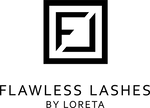The Importance of Regular Infills
Having a set of eyelash extensions whether classic individual or Russian volume is in theory no different to having a set of nail enhancements. Once the set is completed they look amazing however, after two weeks pass natural growth starts to take place and gaps start to appear. Just like with our nails having lashes is a commitment, we need to have regular maintenance or infills to keep them looking pristine, fresh and full.
Our lashes, the same as our hair cycle have three stages of growth Anagen, Catagen and Telogen. Now without going into too much detail and to briefly explain. Anagen is the active or growing stage of our hair growth, Catagen is the transition stage and Telogen is the resting stage. Now there is no way to look at our lashes and say that any one lash is at a certain stage of growth however, this does determine the life span of our lash extensions.
You see, both classic and Russian eyelash extensions are classed as a semi-permanent treatment meaning that if cared for and looked after correctly the synthetic lash will stay attached to the natural lash that it is connected to until that natural lash sheds or comes away.
Now coming back to our infills or maintenance, it is said that on average we can lose 2 to 3 natural lashes per day. Taking this into consideration it would mean that one weeks natural lash loss would roughly be 21 lashes, two weeks natural lash loss would be roughly 42 and then three weeks natural lash loss would be roughly 63. With this in mind it is advised that lash infills or re-balancing appointments are carried out every two to three weeks.
What should lashes come back like for an infill?
When the clients return for an infill how many lashes that are left on will completely depend on what your client has been doing, (Have they been away in hot weather, swimming every day, wearing heavy make-up and so on). It will also depend on their natural lash cycle and at what stage the natural lashes were at when the extensions were applied as well as how they’ve been looking after the lashes. Ideally at point of infill we would like to see about 50% of the lash extensions still in place and a percentage of these lashes to have visible regrowth.
At point of infill it is imperative that the lash technician removes all outgrown lashes ready for rebalancing. Without removing the outgrown lashes a dense and neat lash line cannot be re-created.
A lash remover is not needed to remove these out grown lashes. There is more than one way to remove a lash using tweezers, some example’s would be the banana peel technique which is when you peel the natural lash and the false lash away from each other from the tip or the base using only tweezers. Another method is to support the base of the natural lash with your pick up tweezers and then slide the isolation tweezers up the shaft of the lash, once the tweezers hit the base of the extension continue to slide up causing the extension to pop off leaving no damage or kink to the natural lash.
Why do we infill rather than remove each time?
If we were to remove each set this would add both time and cost to our sets as well as over usage of a remover can dehydrate and strip the natural lashes taking out the goodness from the lash. By infilling lashes correctly and regularly it allows for shorter treatment times and increased longevity of the sets.
Infill times vary depending on the therapist and whether you are infilling Russian or Classic lashes.
On average if the client has returned within the advised 2-3 weeks a Russian infill can take between 1.5 and 2hours and a Classic infill about 1-1.5 hours. Pricing for infills completely varies depending on the local area and competition.
If a client returns after more than 3 weeks it is advised that a soak off or removal is performed with a new set being applied alternatively, a much longer infill will be needed.
If infills are not carried out extensions can become top heavy due to the growth of the natural lash and in turn this can cause twisting , turning or leaning of the artificial lash therefore putting strain onto the natural lash and causing discomfort.










